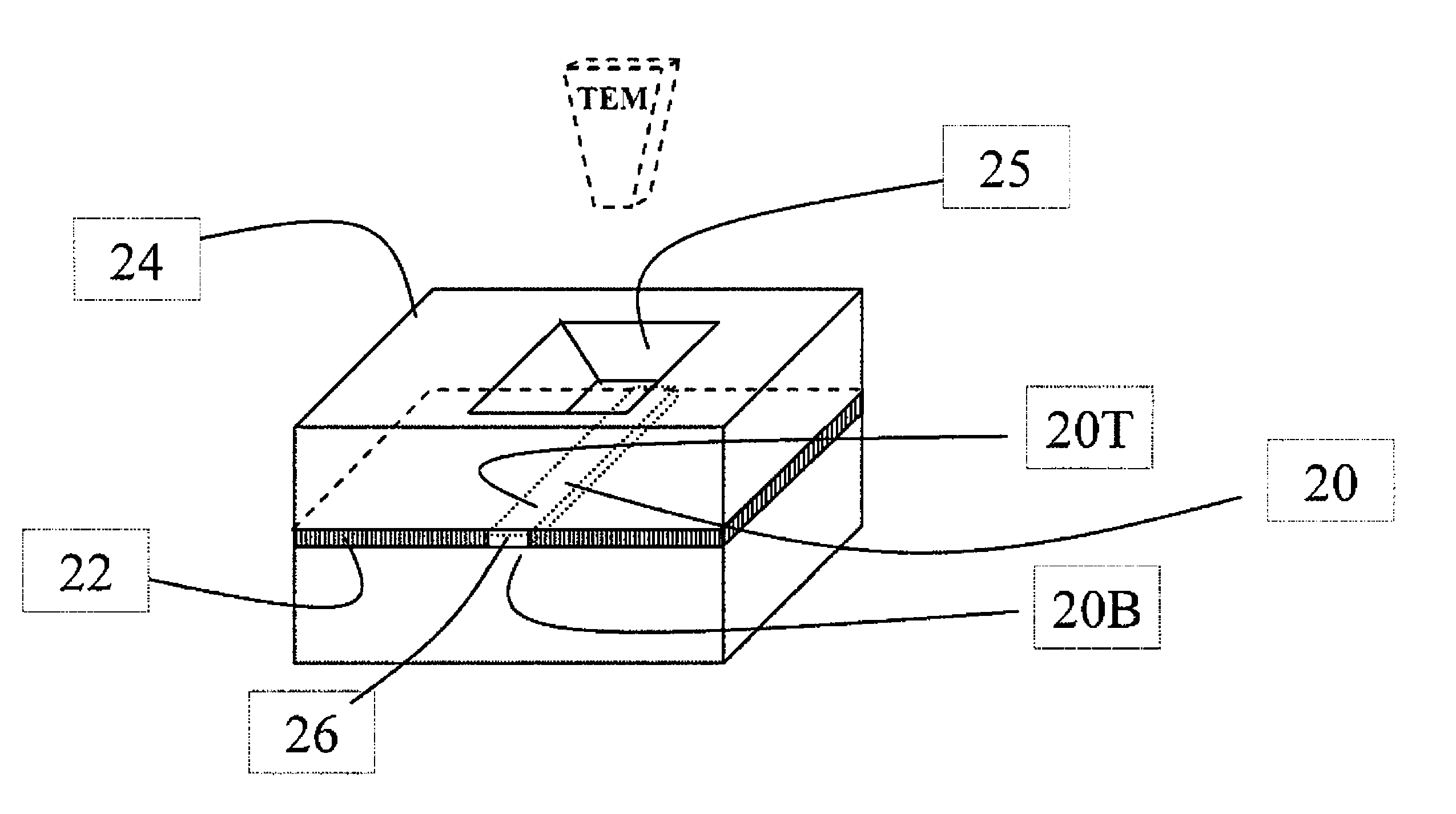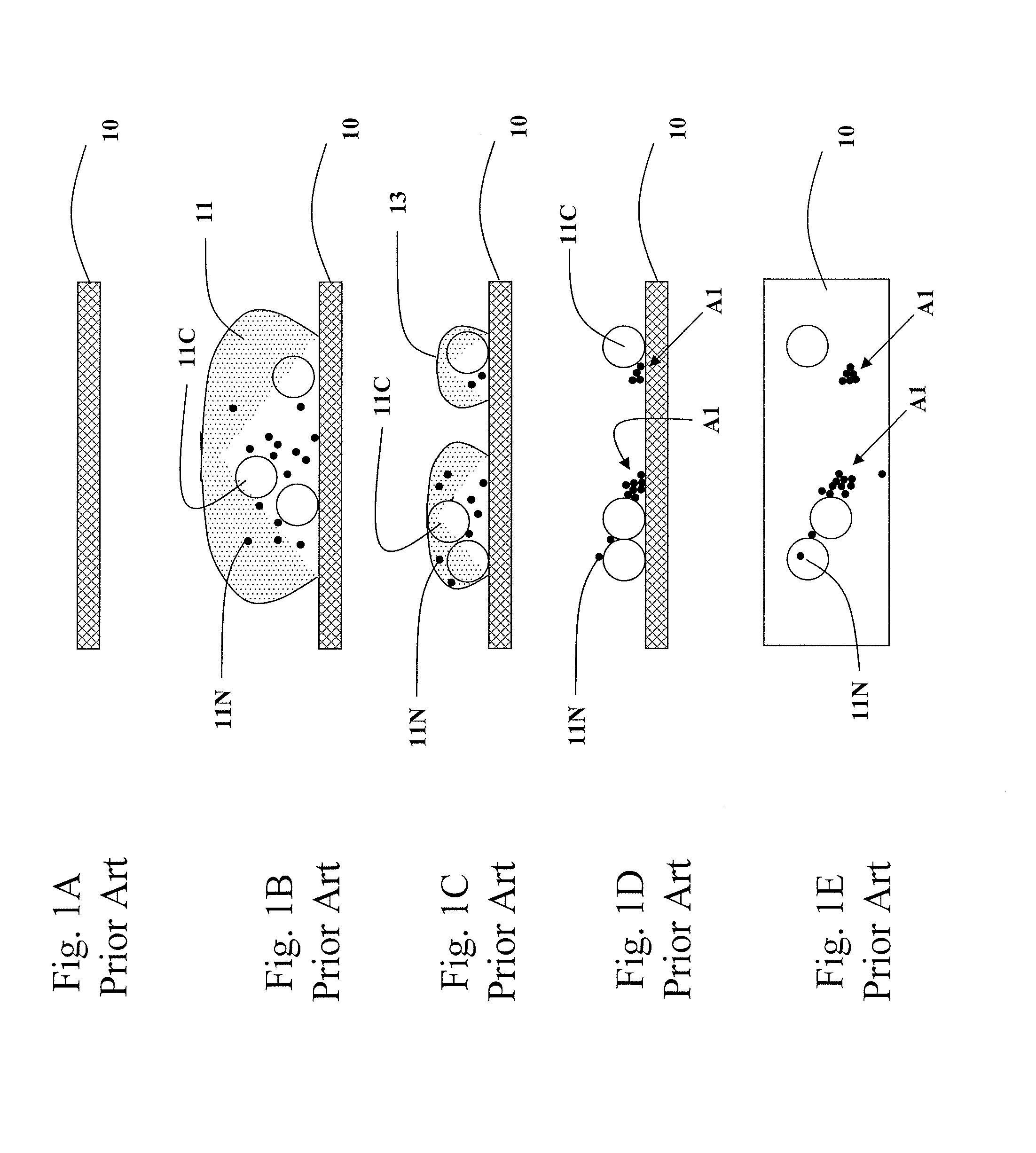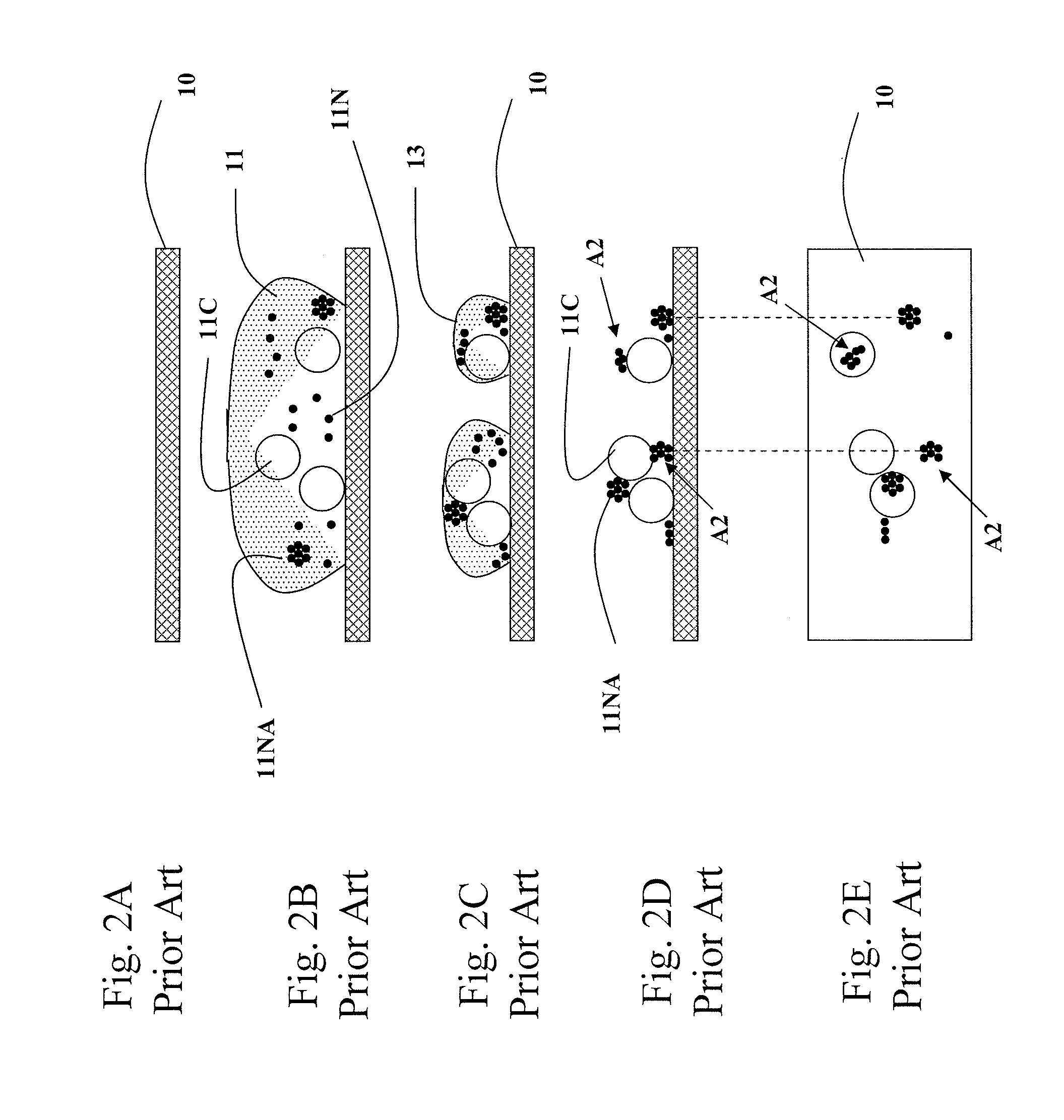Specimen preparation for transmission electron microscopy
a technology of transmission electron microscopy and specimens, applied in the field of specimen preparation, can solve the problems of agglomeration and aggregate confusion, giving wrong information to an observer, specimens prepared by a traditional method do not reflect the original or true status of nanoparticles,
- Summary
- Abstract
- Description
- Claims
- Application Information
AI Technical Summary
Benefits of technology
Problems solved by technology
Method used
Image
Examples
Embodiment Construction
[0027]This invention discloses a method of preparing a specimen with a specimen kit which has a tiny chamber. The height of the chamber is configured to be smaller than the diameter of a red blood cell (RBC). A RBC is smaller than a white blood cell (WBC). Thus, all blood cells are screened from entering the chamber of the specimen kit. The absence of blood cells in the specimen reduces interference with observation of nanoparticles, and therefore enhances the quality and quantity check of the specimen. The small chamber of the specimen kit limits a blood sample inside and eliminates the effect of surface tensions during drying. The specimen prepared according to the invention makes it possible to detect the true distribution status of nanoparticles in the original blood sample, either in dispersion and / or agglomeration.
[0028]FIGS. 3A-E illustrate the first specimen prepared according to the present invention.
[0029]FIG. 3A shows a blood sample 11 is ready to be injected into a chamb...
PUM
| Property | Measurement | Unit |
|---|---|---|
| height | aaaaa | aaaaa |
| diameter | aaaaa | aaaaa |
| diameter | aaaaa | aaaaa |
Abstract
Description
Claims
Application Information
 Login to View More
Login to View More - R&D
- Intellectual Property
- Life Sciences
- Materials
- Tech Scout
- Unparalleled Data Quality
- Higher Quality Content
- 60% Fewer Hallucinations
Browse by: Latest US Patents, China's latest patents, Technical Efficacy Thesaurus, Application Domain, Technology Topic, Popular Technical Reports.
© 2025 PatSnap. All rights reserved.Legal|Privacy policy|Modern Slavery Act Transparency Statement|Sitemap|About US| Contact US: help@patsnap.com



